Cycle News Staff | September 7, 2016
The Four-Stroke/Two-Stroke Wars
Article courtesy of Honda Financial Services. Learn how to finance your next Honda powersports product HERE.
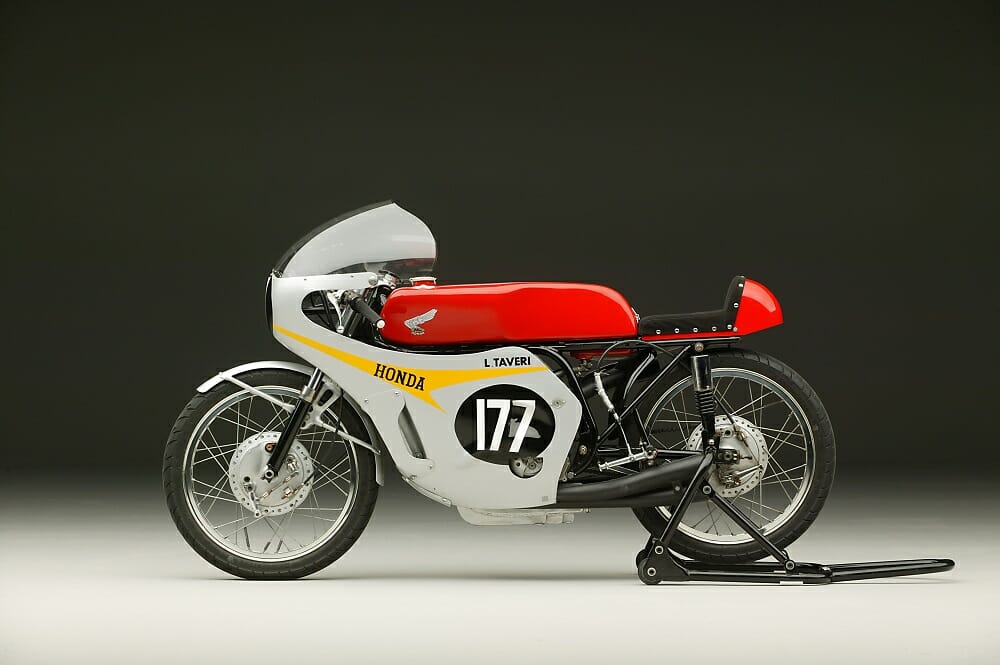
Remember when debates raged about which fundamental design would prove superior for Grand Prix racing, four-stroke engines or two-strokes? We’re not talking 2002, when rule changes gave manufacturers the option of running two-stroke engines of 500cc or less or four-strokes up to 990cc in their GP machines. That deck was loaded in favor of the four-strokes, and morphed into the MotoGP era we have today.
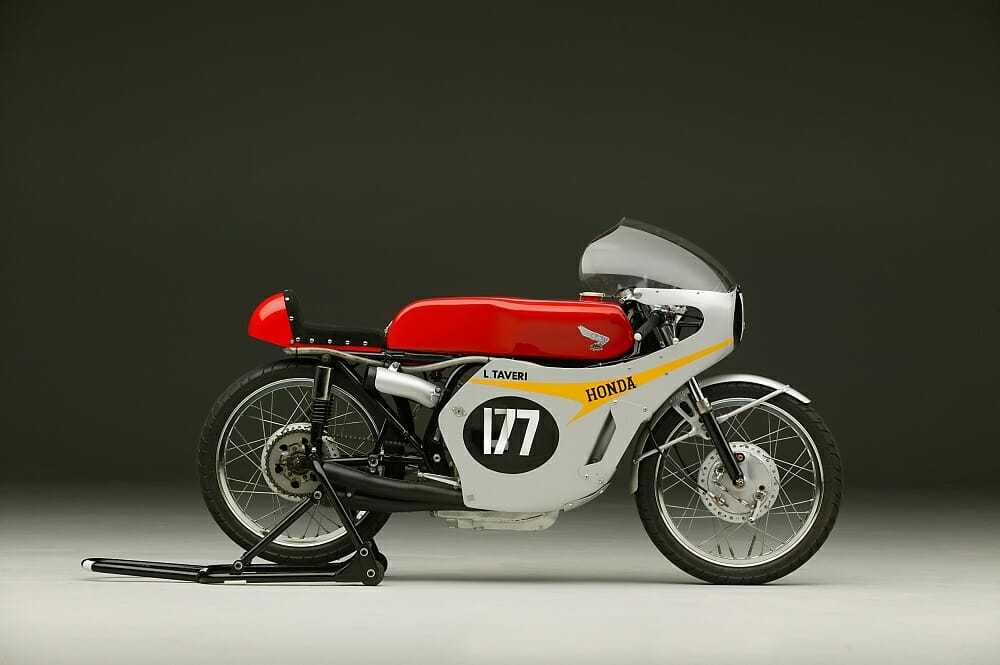
Rather, we’re talking about the middle 1960s, when that key question turned into a technological battle between two-stroke and four-stroke 125cc race bikes. No special allocations or dispensations allowed—just bring your best eighth-liter bike to the track and we’ll settle things at the checkered flag.
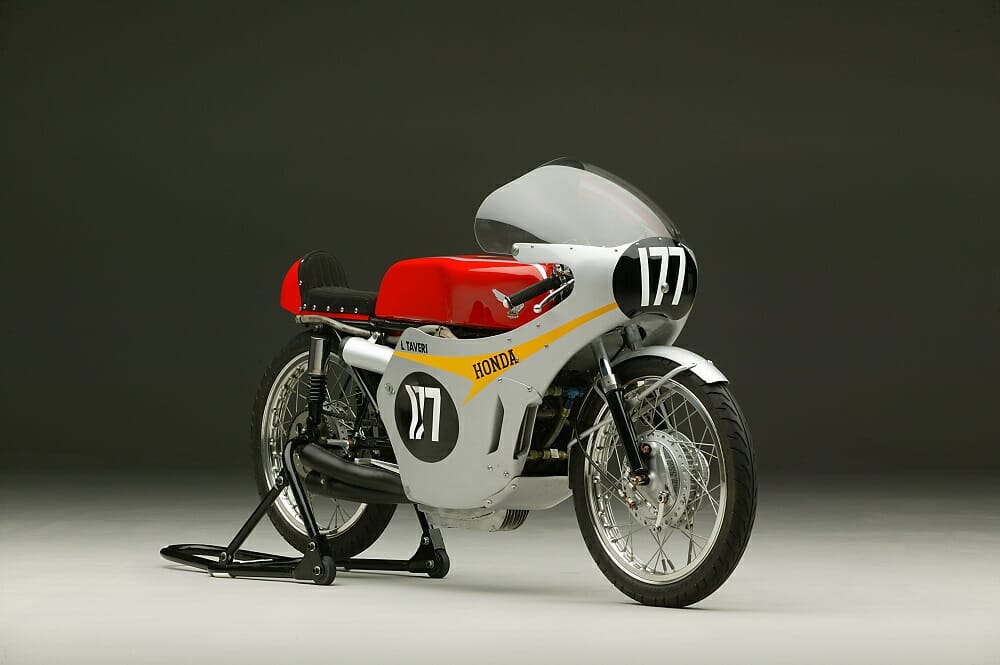
In 1961, 1962 and 1964, Honda four-strokes won three 125cc world titles. But by the middle 1960s two-strokes had evolved into an undeniable force. Debates surrounding engine design had real merit: In a two-stroke engine, every crankshaft rotation yields a power stroke, while four-strokes produce power only upon every other crankshaft rotation—one rotation is “wasted” pushing out gasses. There is no shortcut here; to produce equal power in a four-stroke, engine speeds must increase substantially.
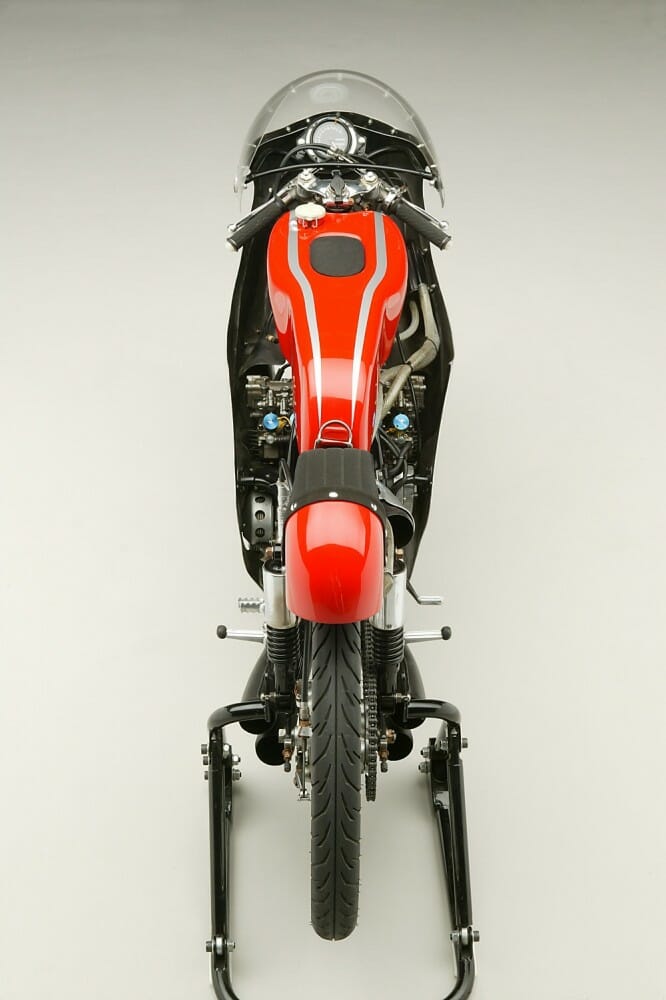
The obvious answer to this dilemma was to create an engine with more cylinders. But they would have to be tiny bores combined with an extremely short stroke to allow ultra-high engine speeds—all of which invited disaster given the materials and technology of the day. But Honda did it.
In 1965, Honda unveiled an incredible machine. It demonstrated just how far Honda engineers could reach beyond convention to produce a winning design. Boasting five cylinders with a bore measuring a minuscule 34.0mm and a stroke of just 27.5mm, this machine had one of the smallest cylinder bores Honda had ever attempted. And it revved to an unheard-of 21,000-rpm redline. Into this 1.33 inch diameter cylinder Honda stuffed four tiny valves and a centrally located spark plug. The next year, Honda engineers made minor changes to the bore/stroke figures, raising the redline to 21,500 rpm and creating the RC149 shown here.
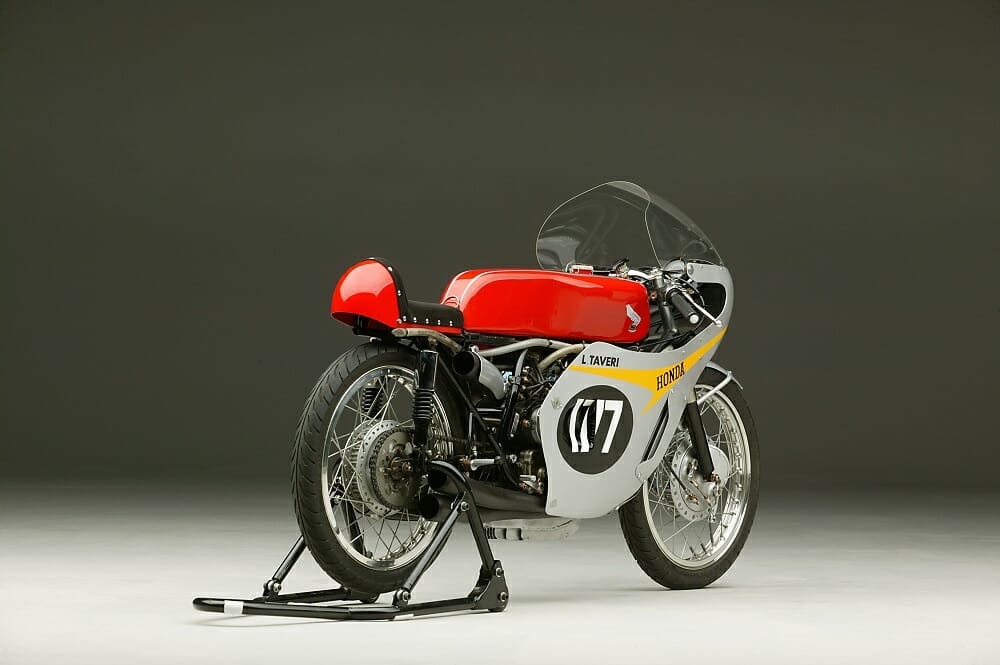
Team technicians noted that these engines were among the most challenging of all Honda race bikes to wrench on. Not because they weren’t built well; they were incredible. The problem was they were so small your fingers felt like huge sausages. And if you tried to lap a valve the usual way, you’d twist the valve head right off.
With 34 horsepower sent through an eight-speed gearbox, the RC149 was good for more than 130 mph. In 1966, Honda won at Hockenheim in West Germany, Sachsenring in East Germany, Brno in Czechoslovakia, Dundrod in Ulster and Monza in Italy, beating the two-stroke-mounted competition for the world championship. That may have defined the four-stroke versus two-stroke argument. But the debate raged on for one simple reason: That was the last year Honda’s exotic works bikes contested the 125 Grand Prix class.
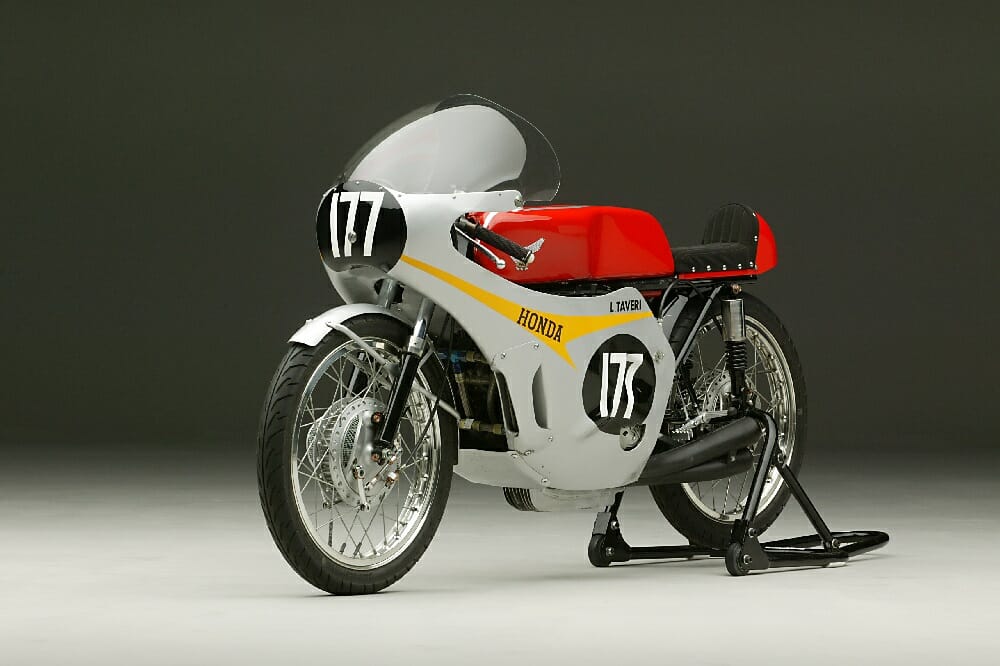
SPECIFICATIONS
Model: RC149
Year: 1966
Engine: DOHC four-stroke inline-five, four valves per cylinder
Bore and Stroke: 35.5 x 25.14mm
Displacement: 124.42cc
Output: 34 hp
Redline: 21,500
Compression Ratio: 12.0:1
Gearbox: Eight-speed
Dry Weight: 187.4 pounds
Top Speed: Over 130 mph
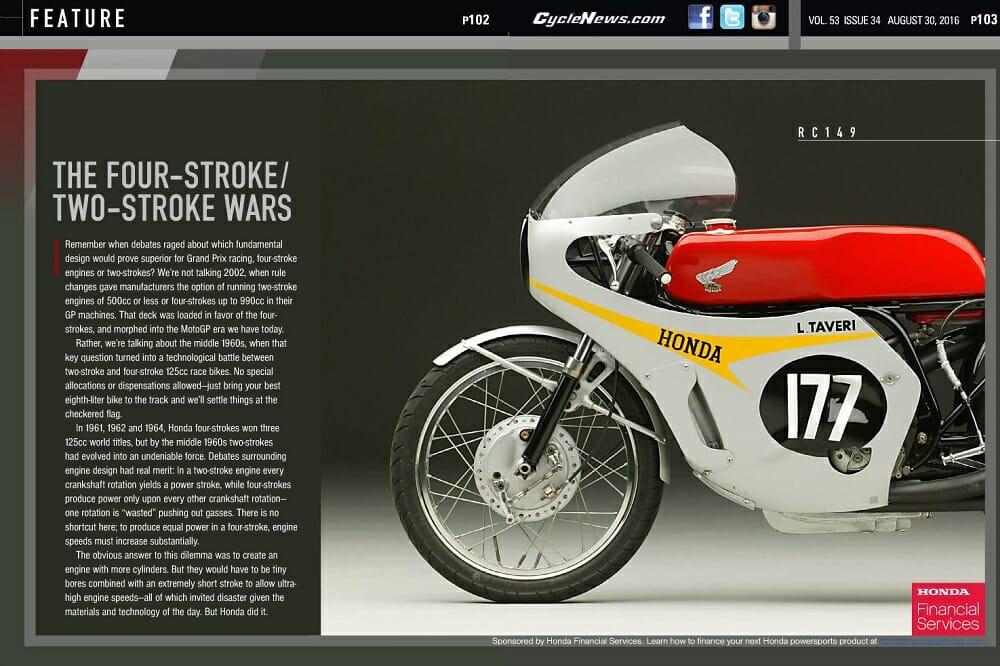
To read this in Cycle News Digital Edition Magazine, click HERE.
Read about Honda’s 1966 RC116 by clicking HERE.
For more Cycle News Sport Bike motorcycle reviews, click HERE.
For more Cycle News Honda motorcycle reviews, click HERE.